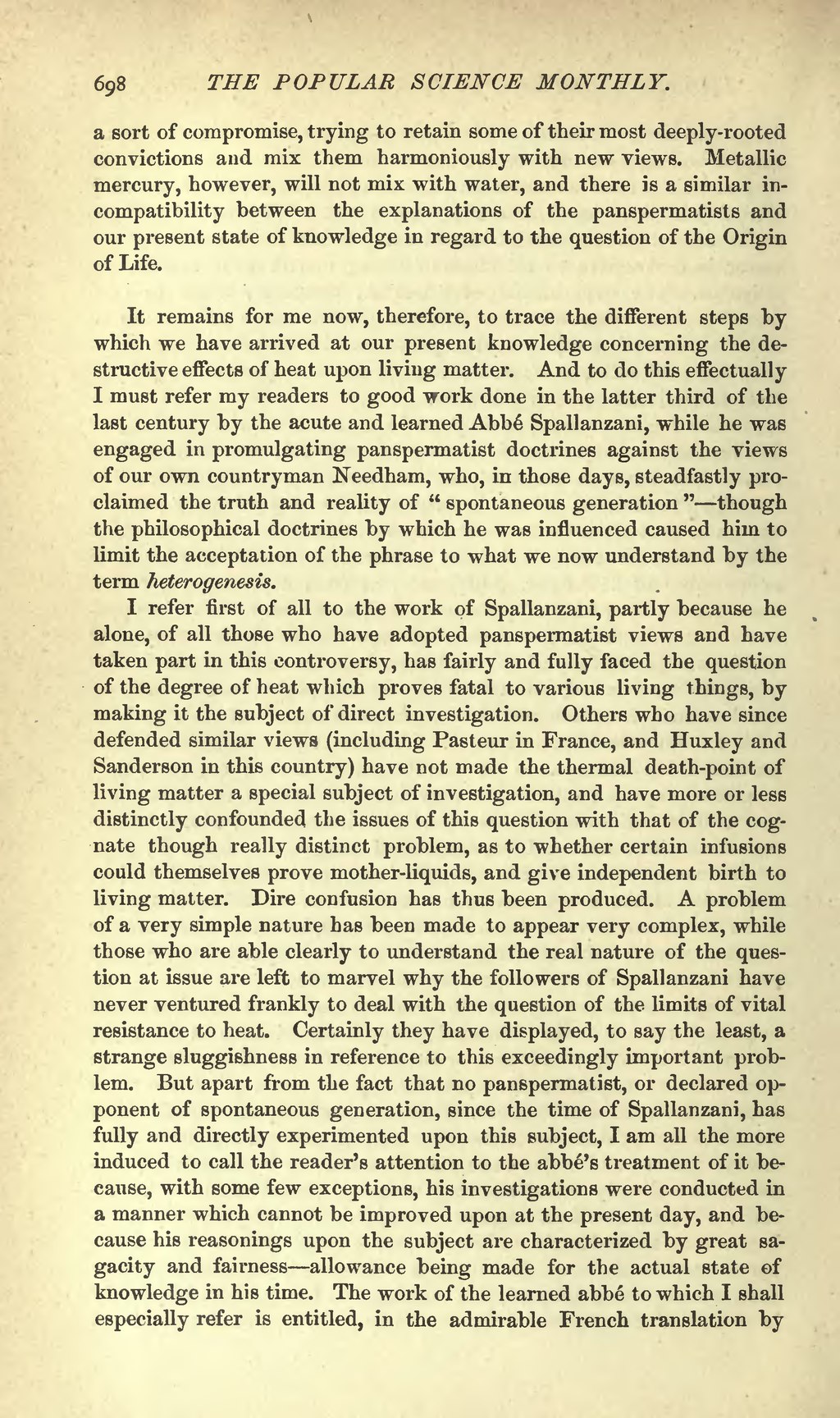a sort of compromise, trying to retain some of their most deeply-rooted convictions and mix them harmoniously with new views. Metallic mercury, however, will not mix with water, and there is a similar incompatibility between the explanations of the panspermatists and our present state of knowledge in regard to the question of the Origin of Life.
It remains for me now, therefore, to trace the different steps by which we have arrived at our present knowledge concerning the destructive effects of heat upon living matter. And to do this effectually I must refer my readers to good work done in the latter third of the last century by the acute and learned Abbé Spallanzani, while he was engaged in promulgating panspermatist doctrines against the views of our own countryman Needham, who, in those days, steadfastly proclaimed the truth and reality of "spontaneous generation"—though the philosophical doctrines by which he was influenced caused him to limit the acceptation of the phrase to what we now understand by the term heterogenesis.
I refer first of all to the work of Spallanzani, partly because he alone, of all those who have adopted panspermatist views and have taken part in this controversy, has fairly and fully faced the question of the degree of heat which proves fatal to various living things, by making it the subject of direct investigation. Others who have since defended similar views (including Pasteur in France, and Huxley and Sanderson in this country) have not made the thermal death-point of living matter a special subject of investigation, and have more or less distinctly confounded the issues of this question with that of the cognate though really distinct problem, as to whether certain infusions could themselves prove mother-liquids, and give independent birth to living matter. Dire confusion has thus been produced. A problem of a very simple nature has been made to appear very complex, while those who are able clearly to understand the real nature of the question at issue are left to marvel why the followers of Spallanzani have never ventured frankly to deal with the question of the limits of vital resistance to heat. Certainly they have displayed, to say the least, a strange sluggishness in reference to this exceedingly important problem. But apart from the fact that no panspermatist, or declared opponent of spontaneous generation, since the time of Spallanzani, has fully and directly experimented upon this subject, I am all the more induced to call the reader's attention to the abbé's treatment of it because, with some few exceptions, his investigations were conducted in a manner which cannot be improved upon at the present day, and because his reasonings upon the subject are characterized by great sagacity and fairness—allowance being made for the actual state of knowledge in his time. The work of the learned abbé to which I shall especially refer is entitled, in the admirable French translation by
